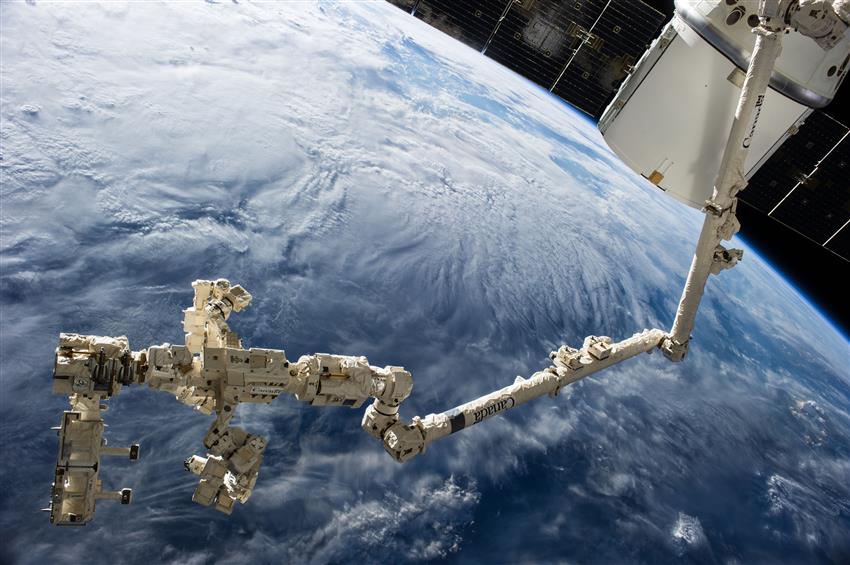Transforming the future of space robotics
Have you looked at the back of your five-dollar bill? It features Canadian space robots Canadarm2 and Dextre!
Did you know that Canada sends astronauts to space because of these robots?
When Canada designed and built Canadarm more than 40 years ago, we invented space robotics.
Since then, we have continued to advance our robots, making them stronger, smarter and more agile. Our cutting-edge robots Canadarm2 and Dextre are the result. Canadarm2 was responsible for the assembly of the International Space Station, and Dextre is the most advanced robot to ever fly in space. Today, our robots keep the ISS running, replacing parts like cameras, computers, batteries, and switches. Dextre even repairs itself in space! Because our robots are so good at maintaining the Station, astronauts don't have to do as many dangerous spacewalks and can focus their time in space on doing science.
The future of space is changing fast. Canadarm2 and Dextre are being asked to do complex tasks they were never designed to do. Thanks to the Canadian engineers who continue to advance the software and capabilities, these robots now catch and unload cargo ships that deliver supplies and science experiments to astronauts.
In exchange for our robotic contribution, Canadian astronauts have been able to fly on space missions. Eight Canadian astronauts have gone to space so far; the last one was Chris Hadfield and he even became commander of the Station. The next to fly to the Station for a six-month expedition will be David Saint-Jacques.
What's next for our space robots? We're trying to make them more autonomous, and in the future, new robots will be AI-based. Countries from around the world want to build a gateway outpost around the Moon as a stepping stone to deeper exploration. Because of the distance (the Moon is a thousand times farther from the Earth than the ISS), there will be communications delays, and initially the lunar gateway will have no crew for long periods of time. Therefore, our next generation of space robots will have to work without human help, using artificial intelligence to operate.

